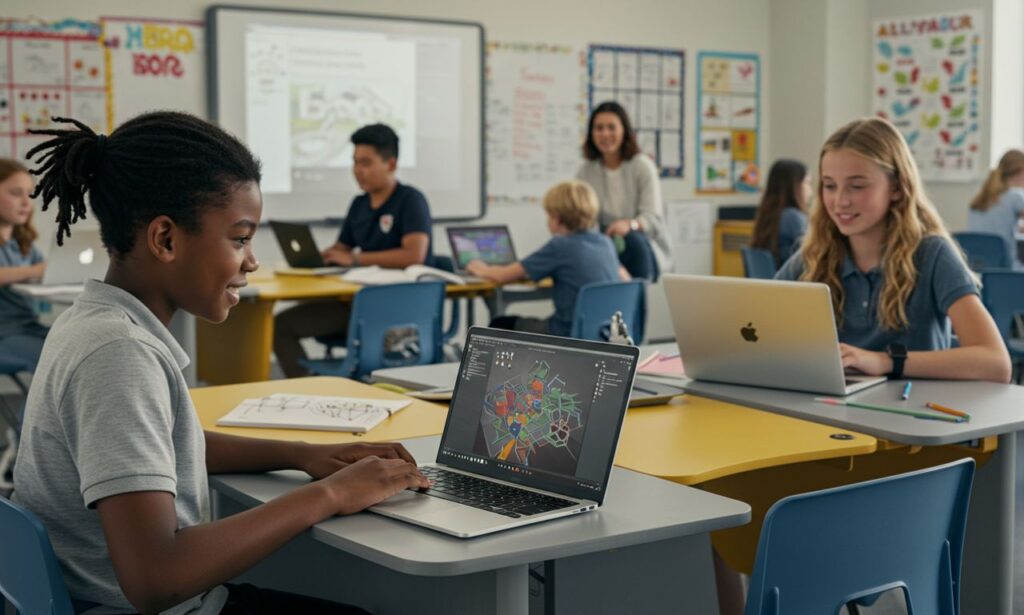The world of education is constantly evolving, and one concept that is rapidly gaining attention is Classroom 15x. As we transition from traditional teaching methods to more student-centric, technology-driven learning environments, Classroom 15x is setting a new standard. Designed to be fifteen times more effective than conventional classrooms, this model offers a comprehensive solution to modern educational challenges by combining adaptive technology, flexible layouts, and personalized learning pathways.
Classroom 15x is not just a futuristic vision—it’s an educational philosophy grounded in today’s needs. It embraces innovation without discarding the essential human elements of teaching, making it a compelling model for schools, educators, and students alike. In this article, we’ll explore the key components of Classroom 15x, how it differs from traditional classrooms, its impact on learning outcomes, and the challenges and opportunities ahead.
Classroom 15x: A New Definition of Learning Space
Classroom 15x is a term that embodies the transformation of learning environments into intelligent, flexible, and responsive systems. The “15x” symbolizes exponential improvement—fifteen times more engagement, efficiency, and effectiveness. But what does that actually look like?
At its core, Classroom 15x includes:
-
Interactive digital tools like smartboards, tablets, and cloud platforms.
-
Modular classroom designs that adapt to different teaching formats—lectures, group discussions, hands-on activities.
-
Real-time analytics and feedback that help teachers tailor instruction to individual student needs.
-
Collaborative learning zones where students can work on projects, share ideas, and develop social-emotional skills.
This approach supports not just academic learning but holistic development, creating a classroom environment that responds to the dynamic needs of learners.
Why Classroom 15x Is Gaining Momentum
The traditional classroom model, with its fixed desks and lecture-based instruction, struggles to meet the needs of today’s digital-native learners. In contrast, Classroom 15x is built for adaptability, ensuring that students are not just passive recipients of knowledge but active participants in their learning journey.
Here’s why educators are embracing Classroom 15x:
-
Engagement: Students stay more engaged in lessons that use multimedia, real-time feedback, and interactive challenges.
-
Personalization: Lessons can be adjusted to each student’s pace, ability, and learning style, ensuring no one falls behind.
-
Collaboration: Encourages teamwork and communication, essential skills for the 21st-century workforce.
-
Accessibility: Provides inclusive tools for learners with disabilities, language barriers, or unique learning needs.
-
Data-driven insights: Teachers can monitor progress and intervene early when students struggle.
Key Components of the Classroom 15x Learning Model
To fully understand how Classroom 15x works, let’s break down its main components:
Flexible Furniture and Modular Design
Instead of rows of desks, Classroom15x utilizes mobile furniture that can be reconfigured for different activities. Whether it’s group work, independent study, or interactive lectures, the room adjusts in minutes.
Integrated Digital Tools
Classroom 15x environments are rich in technology. Devices like tablets and laptops are paired with learning management systems that host quizzes, reading materials, assignments, and discussion boards—all accessible anytime, anywhere.
Artificial Intelligence and Learning Analytics
AI plays a central role by analyzing student performance and adjusting content delivery. For example, if a student struggles with a math concept, the system offers additional practice or explains the topic in a new way.
Interactive and Immersive Media
Using tools like AR (Augmented Reality) and VR (Virtual Reality), students can explore 3D models of molecules, walk through ancient cities, or simulate real-world physics experiments—all from their classroom.
Teacher as Facilitator
In a Classroom15x setup, the teacher transitions from being a lecturer to a facilitator or mentor. They guide students through inquiry, project-based learning, and self-directed research.
How Classroom 15x Improves Learning Outcomes
Implementing the Classroom 15x model doesn’t just look futuristic—it delivers real academic benefits. Research and pilot programs have shown significant improvements in the following areas:
-
Retention Rates: Students in tech-enabled, active learning environments retain more information due to multisensory engagement.
-
Test Scores: Adaptive learning platforms have helped boost performance in math, reading, and science by tailoring instruction to student needs.
-
Attendance and Motivation: A more dynamic classroom encourages students to attend regularly and stay motivated.
-
Soft Skills: Collaboration, creativity, critical thinking, and digital literacy are developed through project-based learning.
Real-Life Examples of Classroom 15x in Action
Several schools and districts have already adopted aspects of Classroom 15x. For example:
-
Singapore’s Smart Classrooms integrate VR for history and geography, along with real-time learning dashboards for teachers.
-
Finland’s flexible classrooms allow students to move freely between stations, with teachers guiding rather than directing.
-
In the U.S., districts like Dallas ISD have adopted AI-driven tutoring platforms to supplement daily instruction.
These schools report not only better academic performance but also higher student satisfaction and teacher morale.
Implementing Classroom 15x: Steps for Schools
Transitioning to a Classroom 15x model doesn’t require a complete overhaul overnight. Schools can take the following steps:
-
Start Small: Pilot a Classroom15x in one grade or subject area.
-
Train Educators: Offer workshops on facilitation skills, technology integration, and project-based learning.
-
Upgrade Infrastructure: Introduce modular furniture and ensure Wi-Fi and device access.
-
Adopt Learning Platforms: Use AI tools like Khan Academy, Google Classroom, or DreamBox.
-
Collect Feedback: Survey students and teachers regularly to improve the environment.
-
Engage the Community: Involve parents, alumni, and stakeholders in funding and vision alignment.
Challenges and Considerations
Despite its many advantages, Classroom15x also comes with challenges:
-
Cost: Upfront investment in furniture, devices, and software can be high.
-
Equity: Ensuring every student has equal access to technology is crucial.
-
Resistance to Change: Some educators may be reluctant to abandon traditional methods.
-
Privacy Concerns: With AI and analytics, schools must handle data responsibly.
Overcoming these hurdles requires planning, communication, and long-term vision.
The Future of Classroom 15x
As more schools adopt the Classroom 15x model, the future of education looks increasingly interactive, personalized, and inclusive. Emerging trends include:
-
Global Classrooms: Students from different countries collaborating in virtual spaces.
-
Microlearning Modules: Bite-sized, skill-focused lessons tailored to learners’ career goals.
-
AI Co-Teachers: Virtual assistants that offer real-time feedback and tutoring.
-
Home-Classroom Hybrids: Flexible models that blend remote and in-person learning.
The Classroom15x philosophy ensures that schools can adapt quickly to societal changes, whether it’s remote learning needs, new career demands, or technological breakthroughs.
Conclusion
Classroom 15x is more than a buzzword—it’s a blueprint for how education must evolve to meet the needs of tomorrow’s learners. With its blend of adaptability, interactivity, and personalization, it empowers both teachers and students to thrive. As schools continue to navigate a fast-changing world, Classroom15x stands out as a future-proof, learner-first solution that fosters not just knowledge, but curiosity, confidence, and creativity.






